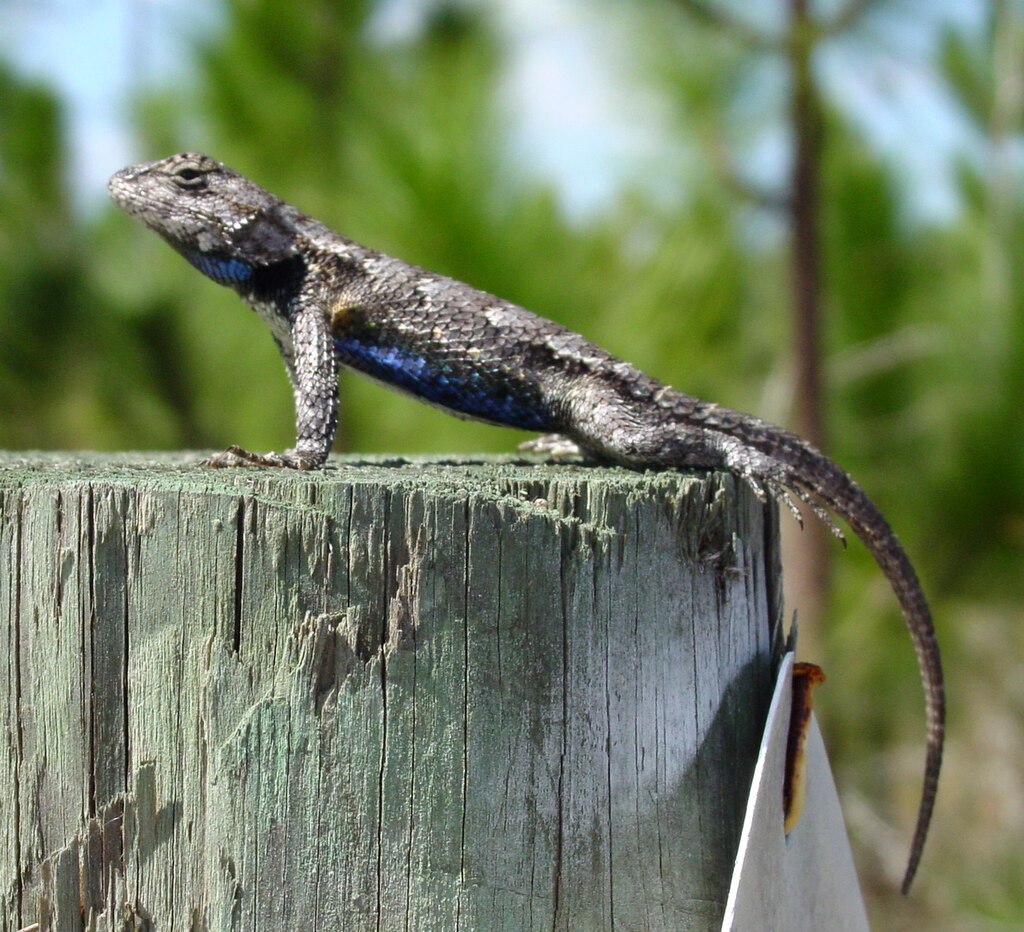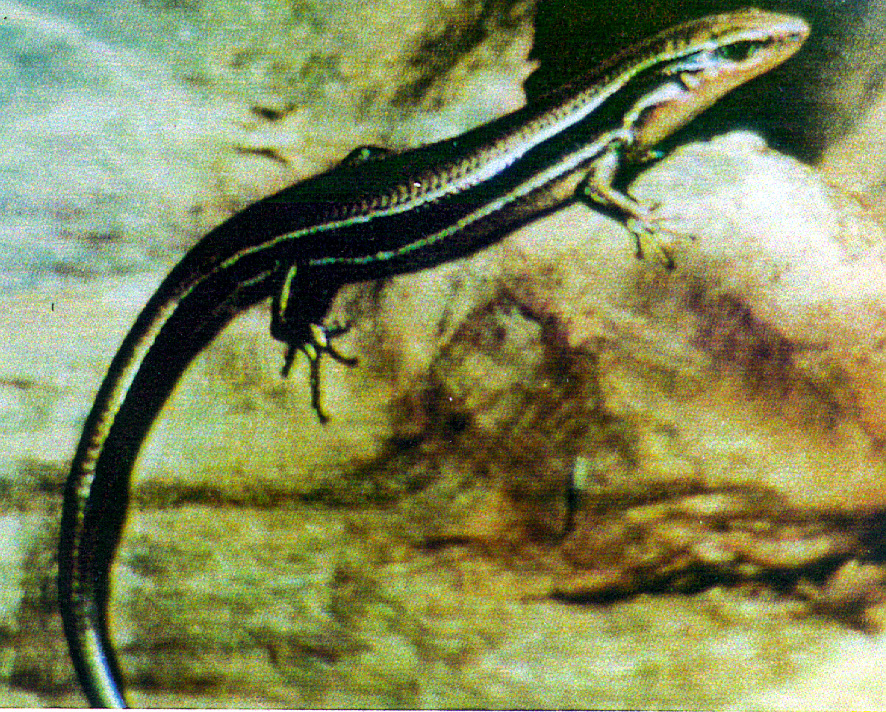There are 6 lizards you will come across in West Virginia, whether you are out walking in the forests or sitting in your own yard. If you’re wanting to find out more about the lizard you just saw in West Virginia, continue reading for detailed information.
Are There Poisonous Lizards In West Virginia?
The good news is that there are no poisonous lizards in West Virginia, but lizards do carry Salmonella.
If you or a family member touches or handles a lizard, ensure you wash your hands thoroughly and keep your hands away from your mouth until your hands are washed, eliminating the risk of getting Salmonella.
Lizards In West Virginia
The 6 lizards in West Virginia, include:
1. Eastern Fence Lizard

Scientific name: Sceloporus Undulatus.
Common name: Eastern fence lizard, prairie lizard, fence swift, gray lizard, northern fence lizard, pine lizard.
The eastern fence lizard is a gray or brown lizard that has a dark line running near the back of the thigh. They grow up to 7.5 inches (19cm).
Females are gray with wavy lines across her back. Her tummy is white with black flecks and maybe some pale blue on her throat and tummy. Males, on the other hand, are brown but tend to become a green/blue color on their tummy during summer.
Their throats are also green/blue with black.
2. Six-lined Racerunner

Scientific name: Aspidoscelis Sexlineatus.
Common name: Six-lined racerunner.
Six-lined racerunners are black, brown, or dark green in color with distinct yellow or green/yellow stripes down the body, the six stripes run from the head to the tail.
Their tummies are white in females and males have pale blue tummies. Males often have a green throat. The tail is double the length of their slender bodies.
These shy and fast-moving lizards can move up to 29 km/hr when trying to get away from predators.
These lizards are often seen in open floodplains, woodlands, grasslands, and even rocky outcrops.
3. Little Brown Skink

Scientific name: Scincella lateralis.
Common name: Little brown skink, ground skink.
The little brown skink or ground skink is one of the smallest reptiles you can find in North America. They grow up to 5.5 inches (14.5cm) in total length, that includes the tail.
If you have a small steam or pond in your yard, then you may come across these small lizards. They are copper brown in color with yellow or white tummies. They have an elongated body with short legs.

Little brown skink distribution map
The little brown skink can be found in most Eastern United States and Northern Mexico.
These skinks like a host of habitats from hedgerows and forests to the edge of a pond or stream.
They are found where there is plenty of leaf litter, which they use to hide themselves if approached. They actually spend most of their time hiding in the leaf litter, as they seldom climb any trees, unlike other skinks.
It’s not uncommon for this skink to hide in water if pursued. They do hibernate in winter and are active during the day, though it is not uncommon for them to be out at night.
4. American Five-lined Skink

Scientific name: Plestiodon fasciatus.
Common name: American five-lined skink.
The American five-lined skink goes by a number of names, such as redhead skink in adults and blue-tailed skink in juveniles.
This is a small to medium-sized lizard growing up to 8.5 inches (21.5cm) in total length.
The younger skinks are dark brown or black in color with five white to yellow stripes that run along with their bodies, accompanied by a bright blue tail, which fades with age, as may the stripes. Older American five-lined skinks lose their dark color to become a uniform brown.

These skinks can be found throughout the United States, though they tend to be more abundant in the southeastern US and Gulf Coat, especially on the coastal plains.
These ground-dwelling lizards prefer wooded habitat that is slightly moist. It’s not uncommon for them to be found inside the walls of buildings, in trees, and in rocky areas.
5. Broad-headed Skink

Scientific name: Plestiodon laticeps.
Common name: Broad-headed skink, broadhead skink.
This is one of the largest skinks growing up to 13 inches (33cm) in total length. These skinks have a triangular-shaped head with a wide jaw, which is where they go their names.
The males are olive brown to brown in color with bright orange heads during mating season. Females have five stripes that run down the back and tail. Juveniles have bright blue tails, which fade with age.

Broad-headed skink map
These skinks can be found in urban areas, though they prefer forest areas with good humidity and lots of leaf litter for them to hide in.
These lizards are the one skink that spends a lot of time in trees, they use trees for shelter and sleeping.
6. Coal Skink

Scientific name: Plestiodon Anthracinus.
Common name: Coal skink.
The coal skink has four light stripes that stretch on their tails. They can grow up to 7.1 inches (18cm) in total length, with their tail taking up a majority of their length.
The lateral stripe is around four scales in width without any light lines on the top of their heads. Males have a red coloration on the sides of their heads during spring and breeding season.

There are two subspecies: the Northern coal skink and the Southern coal skink.
These skinks enjoy humid wooded hillsides with plenty of leaf litter and loose stones which they use to hide from prey. You often find these lizards near springs, where they will hide under stones and debris below the water to escape their predators.
I spotted a Blue Tailed Skink in my backyard in Huntington, West Virginia. It says their from Christmas Island. Is this normal or invasive?
Ok. So I live in Charleston and unfortunately when I am outside working I leave my phone in the Kitchen for my youtube music to play so I have no photos. BUT… Twice now I have seen 2 Lizards that aren’t supposed to be here, I guess. Last fall it was a Black one with orange-red specks of varying sizes all over and then today a black one with white specks of varying sizes all over. The one with the orange specks was in my very rocky hilside and this one with white specks was just under a few leaves behind my house. Should I report this to somebody? Thanks.